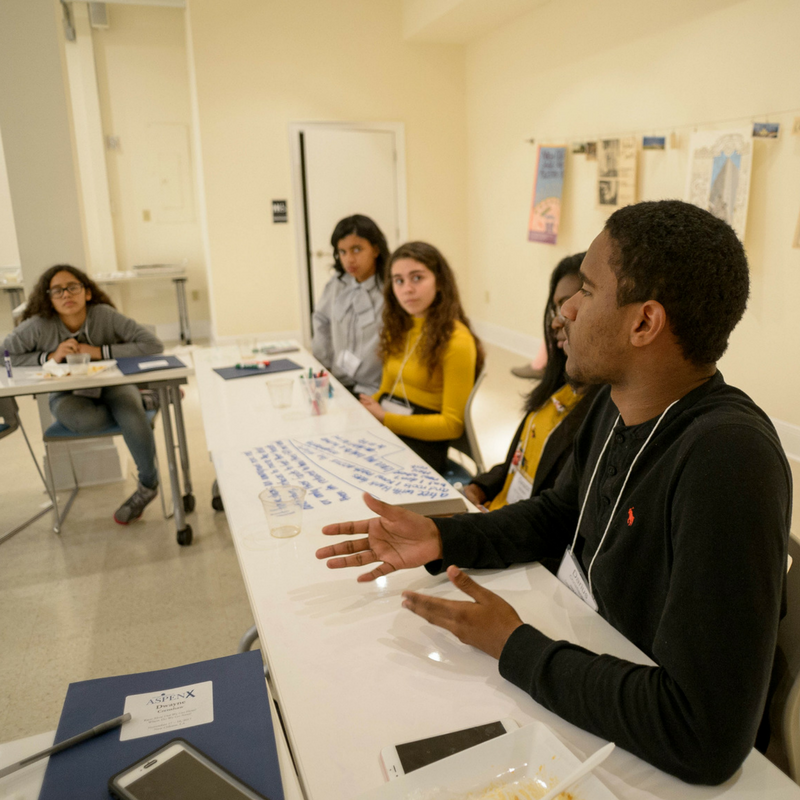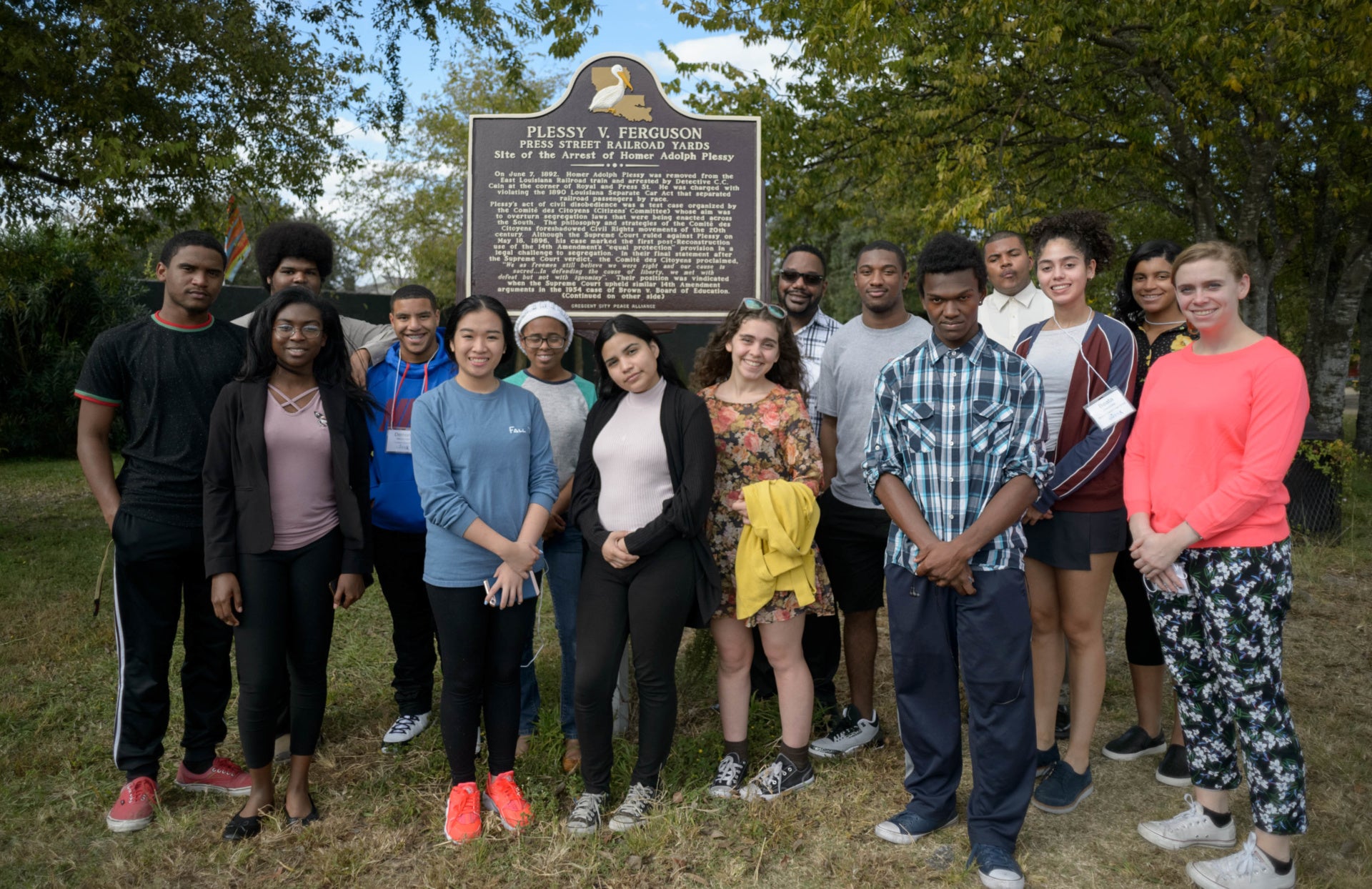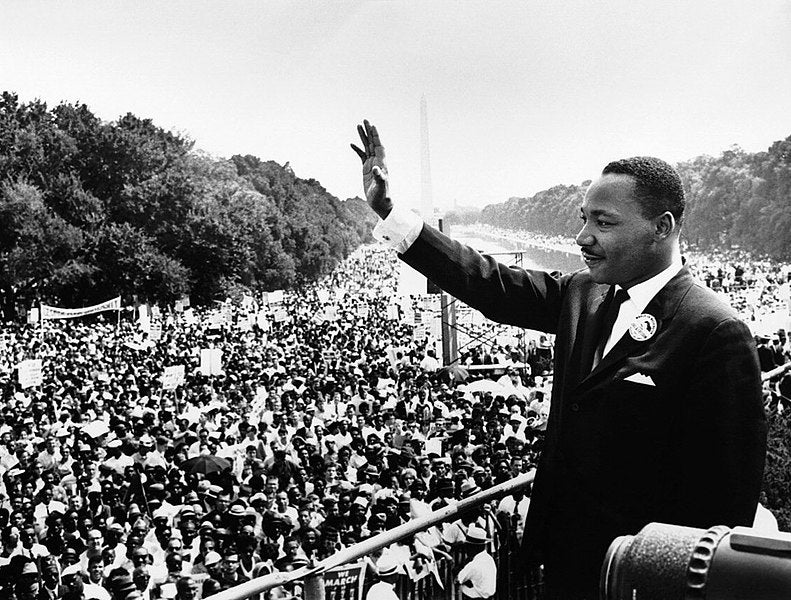AspenX is an opportunity for high school students to take a deep dive into critical topics of the day through virtual and experiential learning and moderated in-person dialogue. Demond McDonald participated in an AspenX seminar experience on race and equity in New Orleans, LA in November 2017 and reflected on his experience.
Last month, the AspenX seminar started with visits to two museums. The goal was for us to leave the experience with more knowledge about our city and its systems and paradigms.
I arrived at the first museum, Le Musée de f.p.c., excited to dive into history, culture, and dialogue – all topics outside of normal conversation for me – with peers. Le Musée is a house museum that tells the story of free people of color covering the colonial period to the Louisiana Purchase. At first glance, it looked like any other home, but the walls were adorned with relics of history, including rare documents and pictures of beautiful influential people of color from different periods.
We were introduced to our tour guide, Kimberley, a Louisiana native with a sincere care for and deep understanding of the history of people of color in the region. Kimberley told us about the suppression of women of color, passionately explaining that, because of white men’s desire for women of color and the jealousy of Spanish and European women, black women were forced to wear head coverings. Like black women of today, these women took this sanction designed to oppress them and created a trend that white women of the colony soon followed. This theme of overcoming adversity was present throughout the tour. It left me pondering a question of many historians and activists before me – what happened to us?

Photo by Leslie Gamboni
After the tour, we transitioned to the backyard for an insightful discussion. Although exhausted from the tour, we discussed what we’d just learned. I decided not to share because I was timid and afraid of judgement from my new comrades. I also enjoyed simply listening to the ideas and opinions of my peers.
We were posed with questions like, how did people of color in New Orleans, black people in particular, go from speaking three languages and being self-sufficient to being ranked 48th out of the 50 states in education. How did we go from having our own businesses and communities to living in projects? None of us had answers, only thoughts based on our own experiences.
Next, we visited the Louisiana History Galleries at the Historic New Orleans Collection. This museum was a juxtaposition to the first. There were more artifacts and documents that portrayed the achievements and cultures of European persons. There was an acknowledgement of other groups of people because of events such as the code noir that affected Africans of the colony. At this museum, I learned more details about the same history that my teachers cover in school and from a different perspective than Le Musée.

Photo by Leslie Gamboni
The next day, we had the opportunity to get to know each other better. Engaging with a myriad of people from different walks of life taught me that we can never assume anything about a person.
Throughout the experience, I gained a new appreciation for the people of this great city. We all left with a conviction to do more. We realized that it would be a disservice to allow the conversation to stop within the confines of the seminar space’s four walls. We were motivated to create change.
Through the AspenX experience, my eyes were opened to the history of the city I’ve lived in my entire life. I would have never known the distinction between the identities of Creoles and African Americans, the stories and legacies of free people of color in Louisiana, or the cultural implications of the French, Spanish, and African on the culture of New Orleans. I couldn’t have gotten this experience anywhere else, and for that I am eternally grateful.


